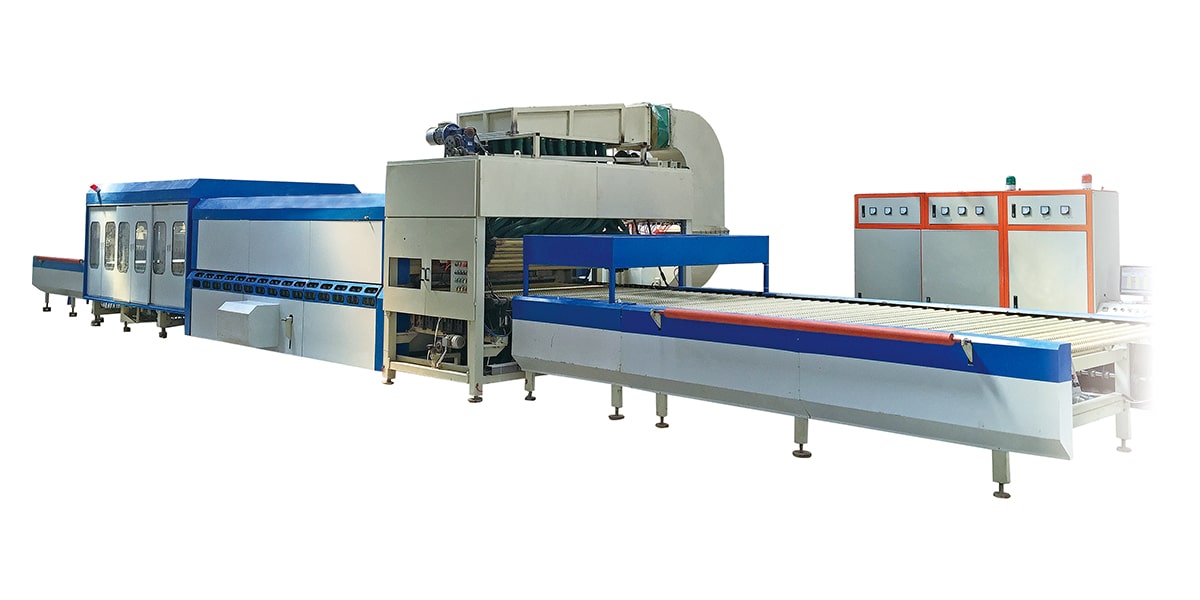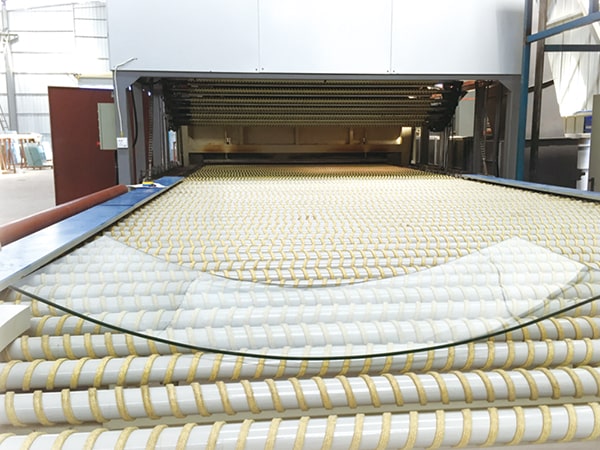Answers To Your Questions On Glass Tempering Furnace
- By:LiaoDA
- Date:2022-09-02
Whether it’s large glass storefronts or glass phone screens, tempered glass is usually wont to protect products and other people. Therefore, the tempering process is crucial. LiaoDa glass tempering furnaces use heat to strengthen and prepare glass to be used during a sort of application. There’s a good sort of tempering furnaces to settle on from, counting on glass type and therefore the fabrication company’s capabilities, volume, and size. The purchase of a glass tempering furnace is the most important investment for a glass processing company. It determines the market value, customer mix and overall profitability of a business. Engaged in the glass processing machinery industry for more than 20 years, LiaoDa glass tempering furnace investment success or failure cases are many. This article aims to help those who intend to invest in a glass tempering machine to properly assess the operating environment and their own situation before making a purchase decision.
What Is A Glass Tempering Furnace ?
A glass tempering furnace is a heating system that uses radiation and convection to temper glass. The heating speed depends on the glass's thickness and the heating speed is measured in seconds per millimeter. A typical heating speed for clear glass is forty seconds per mm; a longer heating time is required for low-e coated glass. Besides, LiaoDa Flat Glass Tempering Furnace is a type of furnace that is designed to create metal in different shapes like round, square or rectangular shapes. These are normally used by melting the metal pieces in the furnaces to form pipes and sheets. The flat glass furnace can be used for various purposes and is a great equipment to use for home heating. Here are some important facts about flat glass furnaces and its benefits. Flat glass tempering furnace is designed to make heat resistant and stronger glass for the cut and processed glass. Flat glass, reflective glass, colored glass and hard-coated (Low-E) glass can be tempered. Glass tempering is performed in maximum quality.
How To Make Glass Tempering Furnace Profitable ?
Generally speaking, the glass tempering furnace accounts for the largest share of the plant's total electricity consumption. The glass tempering machine adopts good comprehensive energy-saving technology, which can save a lot of money for you. For the glass of 4mm thickness or more, the main energy consumption unit of the glass tempering furnace is in the heating section. The amount of heat needed to heat the glass is constant. Reducing heat loss during machine operation is a great way to save energy. The heat loss in the heating part comes mainly from the furnace wall and the convection structure.
Buy Reliable Glass Tempering Furnace
The quality of tempered glass products and the reliability of the tempering furnace will determine the company's development and profitability in the next 5-10 years. Therefore, the reliability and quality of the product are far more important than the price of the machine. The success of your business depends on the high quality of your tempered glass products.
Reliable machines and a comprehensive maintenance program can effectively reduce the frequency of machine breakdowns and downtime. Additional labor costs and late delivery penalties can add millions of dollars if purchasing less expensive machines results in a significant increase in annual maintenance time. So the low cost could save you money temporarily. However, the resulting product quality issues, additional operating expenses, and increased maintenance can have adverse long-term consequences.

How Is That The Tempered Glass Made?
To temper the glass, glass tempering furnaces heat the glass to a particular heat, usually over 600 degrees Celsius. Then the furnace could cool the glass uniformly and rapidly by using air jets. The rapid cooling process is named quenching. it's during quenching that the glass undergoes extreme compression and gains strength against impacts and warmth shock.
The heating and cooling process that happens during tempering strengthens the glass and reduces the danger of breakage or shattering. However, within the event that the tempered glass does break, it shatters into several tiny pieces with spherical edges instead of large, sharp shards. This reduces the danger of great injury.What Is Tempered Glass ?
Tempered glass may be a product made to be safer than other sorts of glass through a controlled heat treatment process that toughens, or strengthens, it. due to this, you'll sometimes hear tempered glass mentioned as laminated glass or toughened glass. Not only is glass that’s been treated by glass tempering furnaces stronger and safer, but it's also more bendable.
Some common applications for tempered glass include ovens, coffee machines, computer and phone screens, and windows and shower doors, to call a couple of.
Tempered glass has more benefits than standard glass. Glass tempering furnaces and therefore the tempering process makes tempered glass stronger and safer than standard glass. This reduces the danger of the glass shattering, or if the glass does break, reduces the danger of injury. Broken tempered glass is far easier to wash up than shattered standard glass. apart from being safer and stronger, tempered glass has also been found to be more scratch-, damage- and heat-resistant. Because tempered glass offers more lastingness it's considered bullet- and storm-resistant, making it the right glass for applications like storefront systems or commercial and residential doors and windows.
Using a furnace for tempering glass is a way to get the same quality of end product that a furnace for burning solid fuel would produce, but it is also cheaper to use than using a traditional furnace for tempering. This is because the process of creating glass objects in a furnace for tempering does not use any fuel at all and uses nothing but the heat of the flame and some heat-resistant dyes. Glass objects can be formed into just about anything imaginable and there are numerous applications for glass-to-gas furnaces.
Plan To Purchase A Glass Tempering Furnace ?
If you are looking for a glass tempering furnace, you will probably notice that it contains a tank that holds a large amount of molten glass. The glass is placed in a tank that has a small gas burner and this is usually located on the front of the furnace. There are also some glass-to-gas units that contain a burner on its side. Some have a small control knob on top of the unit that allows you to adjust the temperature and/or ignition speed of the glass-to-gas mixture. When selecting a glass-tempered object you should consider how much you need so that you will be able to find the right sized furnace for your application.
Another type of glass tempering furnace is called a low-e glass furnace. This type of furnace has low combustion temperatures which means that they are safe to operate even if there is no oxygen in the air. Low-e glass items are often used in hospitals, laboratories, and other high security settings where there may be safety issues if they are exposed to high temperatures. The glass furnace for sale that contains low-e glass is similar to the glass furnace for tempering metal. It contains a single burner and uses low-e gas rather than oxygen for combustion. A third type of glass furnace is called a fiberglass shop furnace. This type of furnace is unique because it contains a special furnace that burns compressed fiberglass. Unlike other glass-tempered items, fiberglass items are not very dense so they can withstand tremendous heat. Fiberglass items are made by compressing fiberglass into sheets and then heating it.
When looking to purchase a glass tempering furnace for sale, you will find that there are many different options to choose from. One thing you need to keep in mind is that the price of these products will vary depending on the size of the unit that you purchase. In addition, you might be able to find high quality glass products for much cheaper prices than you would expect. The only way to find out if you have a deal on one of these products is to go online and do some research. You will want to familiarize yourself with the different kinds of glass tempering equipment and their uses.
Working Principles of Glass Tempering Furnaces
Tempering is a manner that dates lower back millennia, and the concept at the back of it has remained tremendously unchanged in the centuries since. It is the technique of having access to the easiest feasible intersection of electricity and elasticity of a ferrous, or iron-based, steel product by way of heat-treating it to a restricted degree, normally after the quenching process. Modern tempering methods can also be theoretically like their historic counterparts, however the gear presently used is vastly improved. Quenching, for example, which as soon as required a homogenous liquid such as mercury to correctly precipitate hardening of a ferrous steel alloy, can now be finished the use of vacuum or fuel glide techniques. Tempering furnaces have in a similar fashion enabled new abilities for ‘softening’ a ferrous steel after the product has been quenched.
Glass tempering furnace is also called glass tempering equipment, glass tempering unit, tempering furnace, tempering equipment, etc. When the glass is subjected to external force, the compressive stress layer can compensate part of the tensile stress and prevent glass breakage, thus achieving the purpose of improving the strength of glass. The glass tempering furnace forms a compressive stress layer and a tensile stress layer on the glass surface by physical or chemical processes. When the glass is subjected to external force, the compressive stress layer can compensate part of the tensile stress and prevent the glass from breaking, so as to achieve the purpose of improving the strength of the glass. Not only that, the micro cracks on the glass surface become finer under such compressive stress, which also increases the strength of the glass to some extent.
At present, the physical tempering method is widely used to heat the glass to the softening point (650°C), the glass can still retain the original shape, but has a certain ability to migrate particles into the glass and adjust the structure, so that the internal stress of the glass is quickly eliminated. Then put the tempered glass into the tempering furnace and blow a cold blast. When the temperature is balanced, compressive stress will be generated and tensile stress will be generated on the surface of the liner glass, so that the glass generates uniform and evenly distributed internal stresses, and improves the strength of the glass as a brittle material. The tensile strength, the resistance to bending and shock resistance of the glass are improved. At the same time, due to the uniform stress inside the glass, if the glass is partially broken by an impact exceeding its strength, it will self-explode into small particles under the action of internal stress, improving thus its safety. Therefore, tempered glass can also be called prestressed glass or safety glass.
In the glass tempering furnace process, there will generally be wind and stress. During the cooling process, the wind will be irregular due to the uneven stress of the glass. If some special angles are formed, the glass surface will be observed in light and dark. Stress point is caused by uneven force, such as stress caused by heating process, central furnace, uneven temperature difference, etc. There is no way to completely avoid stress points, but well-designed quenching equipment can minimize stress visibility.
-
WhatsApp
CONTACT US

LIAODA (LAD) Glass Machinery Co., Ltd.
We are always providing our customers with reliable products and considerate services.
If you would like to keep touch with us directly, please go to contact us





